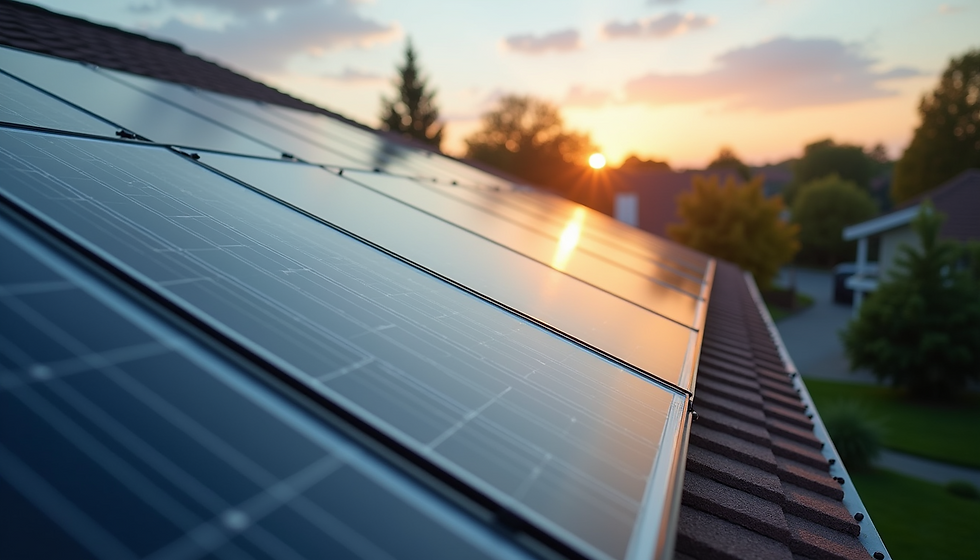Top Ways to Boost Energy Efficiency in Your Home Build by Rachelle Barlow
- Rachelle Barlow

- Jul 24
- 4 min read
Building a new home comes with a unique opportunity to create a living space that not only suits your needs but also contributes to a more sustainable future. One of the most effective ways to achieve this is by incorporating energy efficiency into your home design and construction process. By focusing on energy-efficient strategies, you can lower your utility bills, enhance comfort, and reduce your carbon footprint. Here, we will explore the top ways to boost energy efficiency in your home build.
Understanding Energy Efficiency
Energy efficiency refers to the use of less energy to provide the same service or achieve the same outcome. In the context of homebuilding, this involves designing your home to reduce energy consumption while maintaining comfortable living conditions. Understanding the principles of energy efficiency is essential to implementing effective strategies that can lead to significant savings.
Effective Insulation
One of the critical elements of an energy-efficient home is effective insulation. High-quality insulation helps regulate indoor temperatures, keeping your home warm in winter and cool in summer. Properly insulated walls, attics, and floors create a barrier that minimizes heat transfer.
When choosing insulation materials, consider options like cellulose, fiberglass, or spray foam. For example, spray foam insulation offers excellent sealing properties, filling gaps and cracks that may allow air leakage. Research shows that homeowners can save up to 20% on heating and cooling costs.

Energy-Efficient Windows
Windows are a significant source of heat loss. To enhance energy efficiency, consider installing double or triple-glazed windows that provide better insulation. These windows feature multiple layers of glass with gas-filled spaces in between, which greatly reduce heat transfer.
Look for windows that have a low U-factor, which indicates better insulating properties. Additionally, window placement can affect energy efficiency; optimising for natural light can reduce your reliance on artificial lighting during the day. Research shows that optimized window design can lower heating and cooling costs by up to 15%.
The NCC has updated the minimum energy rating standard in Australia, where we need to meet a minimum standard of 7 stars. The use of double glazing is becoming more common in order to meet the requirements. The negative is the initial outlay, as this does add thousands to the initial outlay. The positive is less energy is used and the temperature inside the home becomes more stable, therefore reducing energy consumption and bills. Over time the windows will pay for themselves.

Sustainable Heating and Cooling Systems
The heating and cooling systems you choose play a crucial role in your home's overall energy efficiency. Traditional heating and air conditioning units can consume significant energy. Instead, consider installing a high-efficiency HVAC system, which is designed to use as little energy as possible while maximising comfort.
You might also explore alternative heating and cooling methods, such as geothermal heat pumps or radiant floor heating. A geothermal heat pump, for example, uses the earth's constant temperature to heat and cool your home, making it a highly efficient option. According to the Environmental Protection Agency, geothermal systems can yield savings of between 30-60% on heating and cooling costs.

Embracing Energy-Efficient Appliances
In addition to the structure of your home, the appliances you choose play a significant role in energy consumption. When selecting appliances, look for ENERGY STAR-rated options, which are designed to consume less electricity and water compared to standard models. For example, an ENERGY STAR refrigerator uses roughly 15% less energy than a conventional model, translating into significant savings over time.
Incorporating smart appliances can also contribute to energy efficiency. Smart thermostats, for instance, allow you to monitor and adjust your home’s temperature remotely. By optimizing usage patterns, you can prevent energy waste and further lower utility bills.
Utilising Renewable Energy Sources
Integrating renewable energy sources can dramatically improve your home’s energy efficiency and reduce dependence on non-renewable power. Solar panels are a popular choice for reducing electricity costs, as they harness energy from the sun to power your home. By implementing solar energy, you can generate your own electricity and save on energy costs.
Choosing Sustainable Building Materials
The materials used in your home's construction can impact both energy efficiency and sustainability. Opt for materials that are locally sourced or recycled, which not only reduce transportation emissions but also support local economies.
For instance, bamboo is an eco-friendly option for flooring as it is rapidly renewable. Similarly, using low-VOC (volatile organic compounds) paints improves indoor air quality while being gentler on the environment.
Incorporating sustainable materials not only supports energy-efficient building practices but can also enhance the durability and longevity of your home.
Final Recommendations
When it comes to building an energy-efficient home, every decision counts, from the initial design to the final touches. By incorporating effective insulation, energy-efficient windows, sustainable heating systems, smart appliances, and renewable energy sources, you can create a living space that meets your needs while benefiting the environment.
Remember that investing in an energy-efficient home can yield long-term financial benefits and contribute to a healthier planet. For more information on building practices designed to enhance energy efficiency, be sure to explore resources on energy-efficient building practices.
Building your dream home is not just about aesthetics; it’s also about making smart, sustainable choices that will benefit you and future generations.




Comments